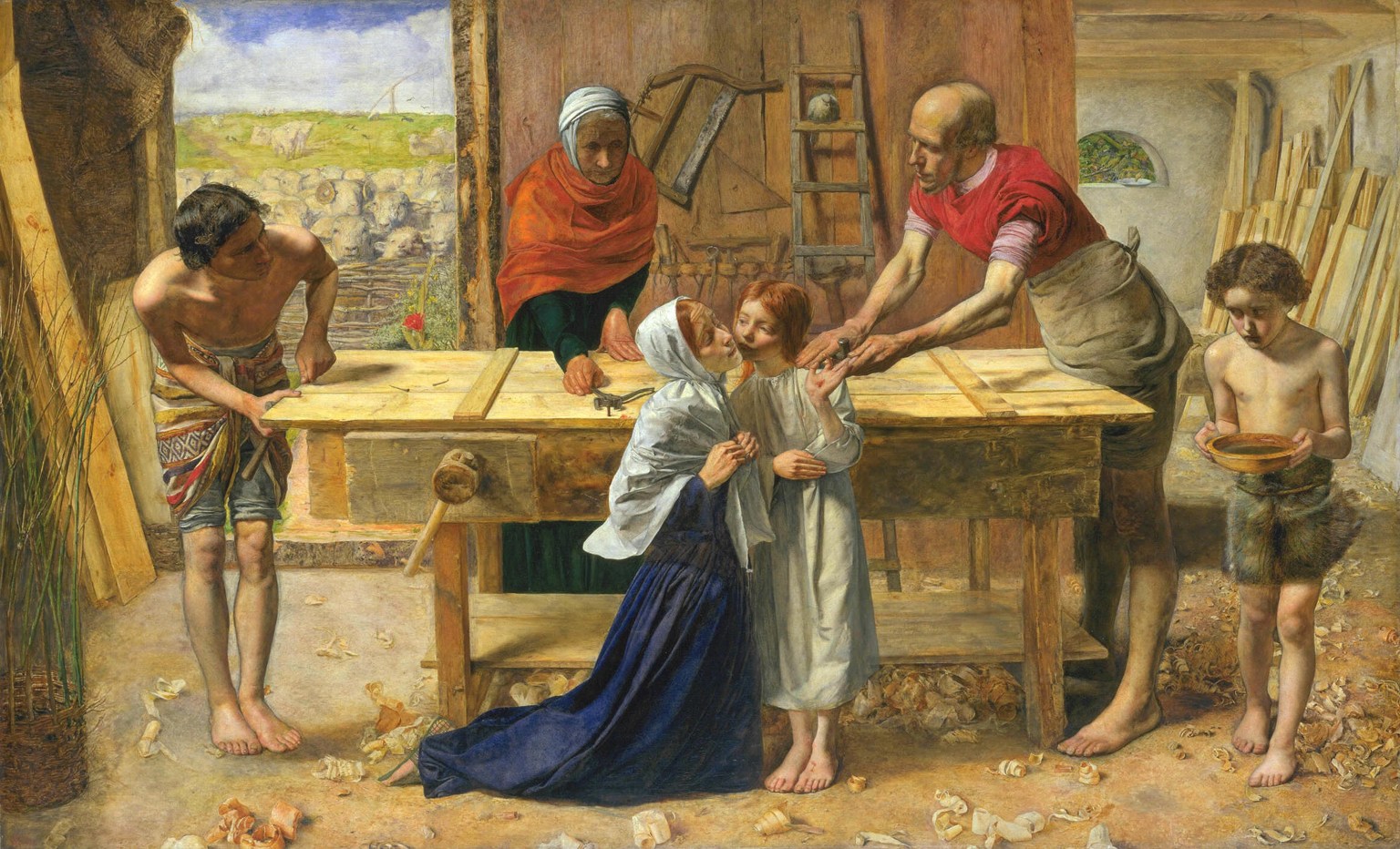This band of brothers – and one part-time sister – wanted to turn back the clock to a less polished era. Above beauty and artifice they valued realism. They were not averse to Raphael’s love of religious themes, nor were they put off by the papal commissions that the 16th-century master relied on. It was not really Raphael himself they objected to; for these young rebels he cannot have seemed like an old fogey as he died at the age of 37. They just visualized things differently.
Perhaps the most brutally honest reworking of a sacred theme was Christ in the House of His Parents by J.E. Millais. Few paintings scandalized Victorian society as much as this one, shown at London’s Royal Academy in 1850. Where was the grandeur or good looks of the First Family of Christianity? The Pre-Raphaelite concern for realism had introduced, according to The Times: “misery, dirt and even disease.” Charles Dickens was alarmingly offended by the physical appearance of Jesus: “a hideous, wry-necked, blubbering, red-haired boy in a nightshirt.” There was also “a kneeling woman, so horrible in her ugliness that she would stand out from the rest of the company in the vilest cabaret in France.”
Seldom has such scorn been poured onto a painting in which so much symbolism has been cleverly inserted. The most important element is the wound on Jesus’s hand as the blood drips onto his foot. (Read more.)
Tota pulchra es Maria
4 days ago


















No comments:
Post a Comment